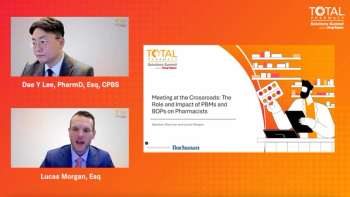
Medication histories available electronically at two Vermont hospitals
Two Vermont hospitals are testing a program that gives doctors and nurses electronic access to patients' medication histories.
It wasn't unusual for patients at Rutland Regional Medical Center and Northeastern Vermont Regional Hospital to carry bottles of medication with them to the emergency room. Those bottles, in many cases, represented the patients' medical histories.
The flow of pill bottles to the emergency rooms of Rutland Regional and Northeastern Vermont Regional began to slow in the spring with the debut of a medical history pilot project developed by Vermont Information Technology Leaders (VITL). Several months ago, Angela Barnett R.N., MPH, and clinical project manager at VITL, overheard a patient tell an emergency room nurse-almost in amazement-"I don't have to bring in all my pill bottles anymore." The two-year-old company is engineering the creation of a statewide health information system that will allow healthcare providers, insurers, and patients to access data electronically.
One of the components of this statewide health information system is the pilot project at Rutland and Northeastern, which allows ER personnel to electronically access patients' medical histories. The project has received such positive feedback over the past several months that VITL is already planning on expanding the program to other hospitals in the state.
After retrieving the medication history, an ER doctor or nurse reviews it with the patient to verify the data and note inaccuracies. The doctor or nurse also will find out if the patient is taking any medication that is not on the list. "Having this list does not replace the need for the nurse or doctor to talk to the patient about what medications he or she is on," Larose said. "But it certainly helps with that conversation." And that conversation can lead to a quicker, more accurate diagnosis.
"The [medication] history gives you more information to go on, which is incredibly valuable," said Barnett. "Not only do you have the point-in-time medication reconciliation, you also have a record of what has been going on with the patient over the past 12 months. A doctor can look at the list, see what medications the patient has been on, and get to the diagnosis faster."
Newsletter
Pharmacy practice is always changing. Stay ahead of the curve with the Drug Topics newsletter and get the latest drug information, industry trends, and patient care tips.










































































































































































































